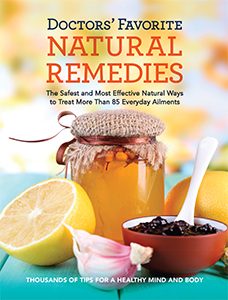Benefits of Calendula: An Ancient Skin Soother With Science on Its Side
Updated: Jun. 23, 2016
Protect yourself from infection and cell damage with this easy-to-grow herb.

Named for its almost year-round flowering from the Latin calendae, meaning the first day of the month, calendula has been used since ancient times to treat wounds and inflamed skin conditions. It is a member of the marigold family, but should not be confused with another popular genus, Tagetes, which is not medicinal. Herbal and cosmetic products are made from Calendula officinalis. The herb is easy to grow and the yellow edible flowers can add a colorful touch to salads.
How Calendula Works:
Although calendula has been used traditionally to treat stomach upsets, ulcers, and menstrual problems, scientific research has centered on its wound-healing properties. The dried petals—the parts used—contain high levels of flavonoids, including lutein and beta carotene, which are antioxidants that help protect against infection and cell damage caused by free radicals.
Laboratory and animal research has shown that calendula flower components have a marked anti-inflammatory and antibacterial action, and heal wounds by helping new blood vessels and new tissue to form. In patients with leg ulcers treated with either a calendula ointment or saline solution dressings, calendula helped ulcers heal much faster.
French researchers rated topical calendula “highly effective” for preventing dermatitis in women who had received radiation therapy for breast cancer.
How to Use Calendula:
There are many available creams, ointments, lotions, oils and more. Follow label instructions; or make your own soothing salve. Place dried flowers in a jar and fill with olive oil. Infuse for a few weeks, shaking the jar regularly. Strain the oil, then add beeswax—about 2 ounces to a cup of oil—and then heat until the beeswax melts. Add a few drops of essential oil fragrance, if desired, plus a little vitamin E, then store in a bottle or jar. You can also use an infusion of the flowers as a tea, a healing gargle or mouthwash, or in a compress to soothe wounds. Steep 1-2 teaspoons (5–10 ml) of petals in boiling water for 10–15 minutes and then strain.
Safety First
Calendula is considered very safe but be careful if you are taking sedatives, blood pressure or diabetes medications as it could enhance their effects.
Where to Find Calendula
Calendula products can be bought in health food stores, pharmacies or from a qualified herbalist.

Get More Natural Remedies Doctors Approve!
The book Doctors’ Favorite Natural Remedies offers effective ways to treat more than 85 health conditions and evaluates the most commonly used alternative therapies and supplements. Learn more and buy Doctors’ Favorite Natural Remedies here.